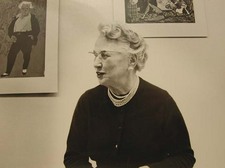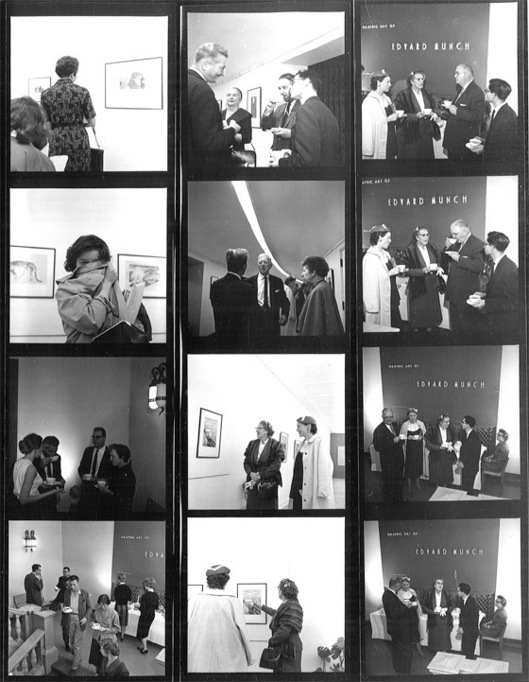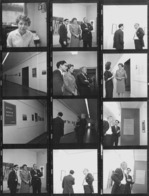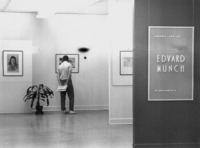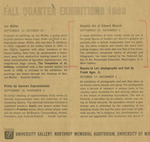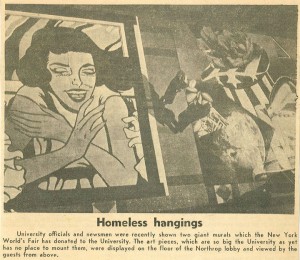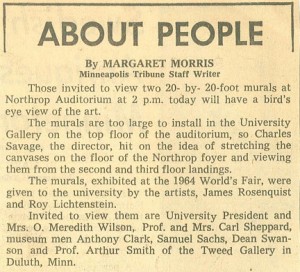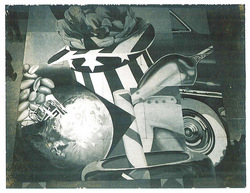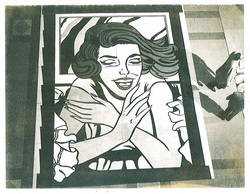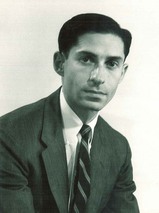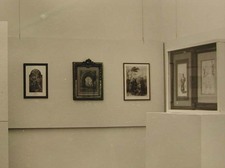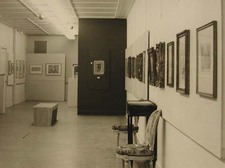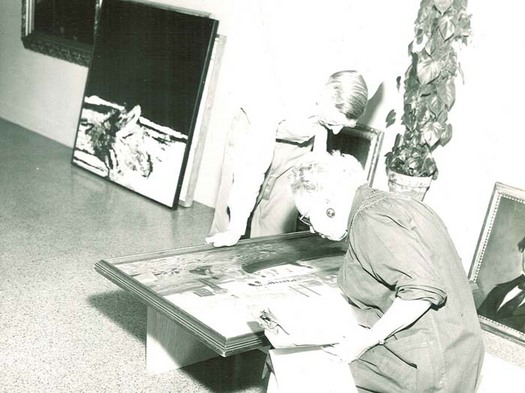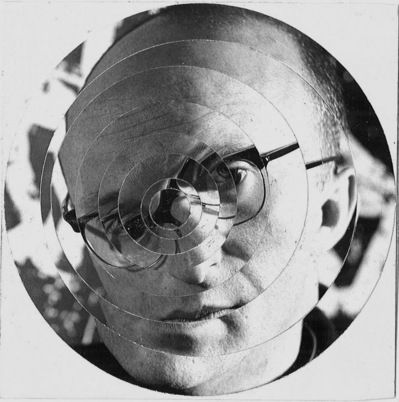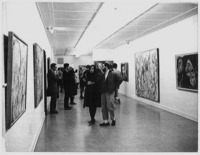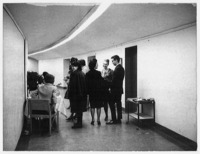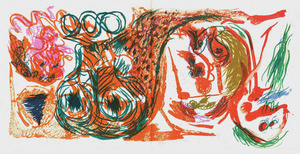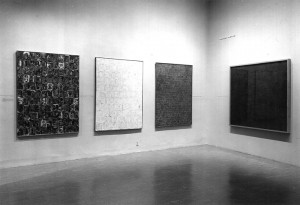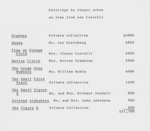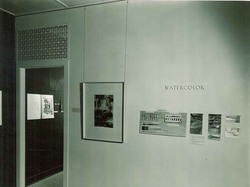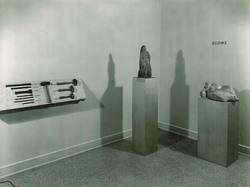Inspired by the photographs found of the 1947 exhibit, “Materials and Tools of Art” I thought it would be of interest to share the Materials and Tools of Archives – as related to the WAM Files project.
First, the location. Processing occurs in a secure subbasement workroom of Elmer L. Andersen Library on the West Bank campus at the University. The workroom is shared by the many archives and special collections units that comprise the library. In a front corner of the room, the “materials and tools” are kept amongst three large tables which combine to form a U-shaped work station.
Let’s start with a few vocabulary words.
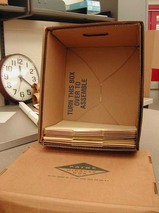 Box – Container for folders.
Box – Container for folders.
Folder – container for materials (correspondence, exhibit catalogues, exhibition checklists, photos, slides, etc.)
Processing began with replacing several of the first set of boxes that had ripped tops or torn corners/edges. Simply put, contents from old boxes are moved to new boxes. Propping the box allows for folders to be neatly and orderly stacked on top of each other while transferring contents from one box to another. Another tool, a sponge, acts as a placeholder, keeping folders upright and ensuring they don’t collapse or fold over as other folders are removed. Folders that are ripped, weak, or colored are replaced so that the folder will reinforce or adequately hold the contents within.
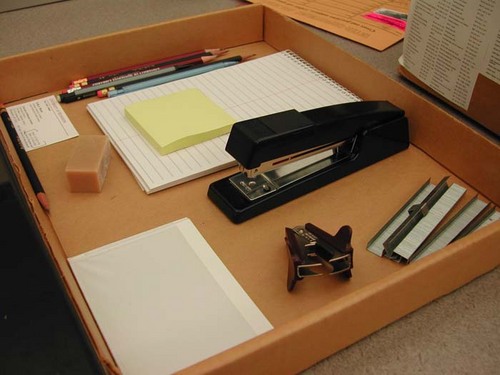
Pencil – Each folder is labeled with the collection number, folder title, and the date. Whether you like an old school #2 or a high-tech mechanical, it’s the processors choice – just never use a pen.
Eraser – We’re not perfect!
Stapler, staples – Labeled folders that do not need replacing are stapled on the label. Due to the humidity levels of the environment in which the collection is stored, the adhesive on the labels will give way over time resulting in a label free fall.
Staple remover – During the creation of the record (based on the administrative flair of the creator) notes, business cards, and other miscellaneous items were often stapled to the inside of folders. The staples are removed and the newly-free, formerly-attached items join the remaining folder contents.
Post-It Notes – To make notes!
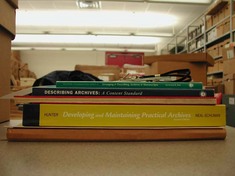 Reference materials – In addition to the University Archives processing guidelines document, our project adviser has shared with us several standard references for archival processing.
Reference materials – In addition to the University Archives processing guidelines document, our project adviser has shared with us several standard references for archival processing.
Computer – The collection series, folder title, and date is recorded on a spreadsheet to make a record of the contents of the collection, which will later be converted to encoded archival description (EAD) which will be used to create a finding aid.
But before we get ahead of ourselves with talk of finding aids (we have completed processing just short of 30 boxes thus far), there is one final and and important material that is of paramount use in the archives – cotton, wool, polyester, whatever variety of fabric blend preferred by the processor that will provide an extra layer of warmth in the cool, cavernous, temperature controlled environment.
